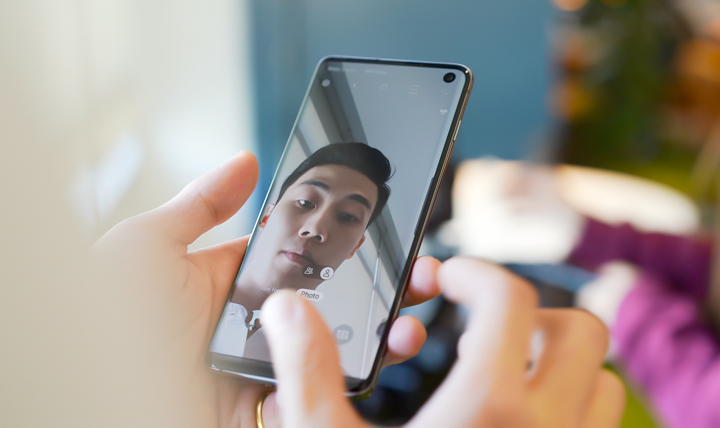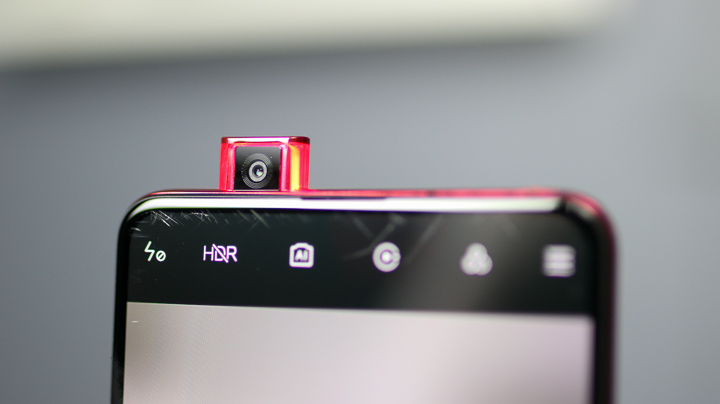Most early smartphones began with full, thick bezels all over. There were no efforts yet to hide the front camera and the call speaker. A number of the earlier smartphones even had the company’s logo printed across or somewhere around the top bezel. Due to the thick bezels, most displays only measured at four inches.
Years later, 18:9 displays arrived with thinner bezels. And then, somewhere along the way, notches happened. The idea was to slowly, but surely, maximize the screen size of the smartphone. And then efforts were made to make a full, bezel-less display without notches. No distractions, no anything. And so, smartphone companies began thinking of different ways to reach that all-screen dream.
Table of Contents
From thick bezels, smartphone companies then moved on to employing grooves on their displays to have more full screens. The question is, which company started the notch idea first? If you search for the answer to that question, you’ll find that there are different reports across the web.

It’s suggested that while it isn’t explicitly referred to as a “notch”, the LG V10, released in 2015, was the first smartphone to have a panel above the standard display, housing the front camera and information such as time, weather, and app shortcuts. This panel was always-on screen and wasn’t removable.

Another answer that will come up when searching about the first notches on smartphones is the Sharp Aquos S2. This smartphone was only launched in Asia and was never released globally. The Aquos S2 had a circular notch where the front camera resided, allowing the rest of the phone to have slim bezels, apart from the chin which still had a physical home button.

A third answer to the first notch question comes in the form of the Essential PH-1. From research, the Essential PH-1 is actually what a lot of tech-savvy people answer when asked which smartphone first had a “proper notch.” The Essential PH-1 had a circular notch, with the rest of the display bezels looking slim.

Despite all those smartphones that innovated the notch, it wasn’t until Apple came out with the iPhone X that the notch indeed took off and became popular in the smartphone market. The iPhone X’s notch was rather sizeable, housing not just the front camera but also an IR dot projector and an IR depth-sensing camera as well.
Google Pixel 3
Some examples of the bar notch include the LG G7 ThinQ, Google Pixel 3 XL, Huawei P20, OnePlus 6, Xiaomi Mi 8, and the like.
Soon, bar notches were seen as a hindrance to the slim bezels, full-screen dream, and so smartphone companies began to tinker with the idea of smaller notches. As mentioned, it was the Sharp Aquos S2 and the Essential PH-1 that were way ahead of everyone else with their circular notches. Then again, the circular notches weren’t enough, and companies still wanted to make that notch even smaller than how it already was.

Huawei P30 Pro
Enter the world of the drop notch, dubbed in various names depending on which smartphone company you’re looking at. It can be referred to as a waterdrop notch, teardrop notch, or a dewdrop notch. Samsung even has particular names for the shape of its notches, such as Infinity-V and Infinity-U.

Xiaomi Mi 9
Some examples of smartphones with drop notches include the Realme 3 Pro, OnePlus 7, Huawei P30 Pro, Xiaomi Redmi 7, Xiaomi Mi 9, OPPO F9, and the Vivo V11.

Samsung Galaxy A8s
The drop notch was still pretty far from the full-screen smartphone goal, and so, smartphone companies then continued to experiment in how they can maximize the screen space. After drop notches came the ‘hole-punch’ camera. The drop notch was then eliminated and replaced by a hole camera that’s located either at the top left or top right of the smartphone’s screen.

Samsung Galaxy S10
The Samsung Galaxy A8s was the first smartphone to have a hole-punch camera, with Samsung calling the display as an “Infinity-O” display which was adopted by the flagship Galaxy S10 series. Soon after, Honor, a sub-brand of Huawei, also announced its hole-punch display smartphone, the Honor View 20.

Vivo Z5X
Other smartphones that have the hole-punch camera include the Samsung Galaxy M40, Vivo Z5X, Nokia X71, and Motorola One Vision.
Of course, innovation didn’t stop at the hole-punch camera. Up next was something that was familiar yet seemed to be a new sight to smartphones: slide-out cameras. Even before the all-screen smartphones, we’ve already had the slide-out mechanism in mobile phones. We’ve seen it in the T-Mobile Sidekick, Nokia N96, Nokia N97, and the like.

OPPO Find X
This time though, the slide-out mechanism has been applied to the front camera, eliminating the top bezel. Smartphones that have employed this mechanism include the OPPO Find X, Xiaomi Mi Mix 3, Honor Magic 2, and the Lenovo Z5 Pro.

Vivo NEX
It wasn’t that long before slider cameras turned into pop-up cameras. Pop-up cameras weren’t an entirely new thing either; there were already smartphones that had pop-up cameras. However, they still had the thick bezels up top. They were a far cry from maximizing the screen space.

Redmi K20 Pro
The pop-up cameras in newer smartphones are sized smaller than the usual slide-out mechanism. Similar to the sliders, the more modern pop-up cameras allowed smartphones to have thinner bezels all over the screen. Examples include Vivo Nex S, Vivo V15 Pro, OPPO F11 Pro, OnePlus 7 Pro, and Redmi K20 Pro.

OPPO Reno
Some have opted to give their pop-up module a design to make it stand out from the rest. Case in point, we have the OPPO Reno and its shark-fin design front camera.
Rotating or flip cameras aren’t a new thing as well in mobile phones. However, similar to the earlier slider camera phones and pop-up camera phones, previous smartphones that had rotating cameras still employed sizeable screen bezels. Examples of that were the OPPO N1, OPPO N3, and the Huawei Honor 7i.

Samsung Galaxy A80
For newer smartphones, the flip camera mechanism is another way to remove bezels from the display altogether. Samsung’s Galaxy A80 has a slide-out and a flip camera, with the rear shooters also acting as the front camera.

ASUS took this the rotating camera up another level when it introduced its latest flagship, the ASUS Zenfone 6. The rear cameras would raise, then flip to become the front camera.

While the latest innovations towards the smartphone all-screen dream are the pop-up and flip cameras, some smartphone companies have already started developing newer technologies. Both Xiaomi and OPPO have teased their respective under-display front camera technology. It’s going to be a while before we actually see the market release of their current prototypes but still, it’s an exciting technology to forward to.
What about you? Which of these innovative various ways of removing the notch do you prefer? Share it with us in the comments!

YugaTech.com is the largest and longest-running technology site in the Philippines. Originally established in October 2002, the site was transformed into a full-fledged technology platform in 2005.
How to transfer, withdraw money from PayPal to GCash
Prices of Starlink satellite in the Philippines
Install Google GBox to Huawei smartphones
Pag-IBIG MP2 online application
How to check PhilHealth contributions online
How to find your SIM card serial number
Globe, PLDT, Converge, Sky: Unli fiber internet plans compared
10 biggest games in the Google Play Store
LTO periodic medical exam for 10-year licenses
Netflix codes to unlock hidden TV shows, movies
Apple, Asus, Cherry Mobile, Huawei, LG, Nokia, Oppo, Samsung, Sony, Vivo, Xiaomi, Lenovo, Infinix Mobile, Pocophone, Honor, iPhone, OnePlus, Tecno, Realme, HTC, Gionee, Kata, IQ00, Redmi, Razer, CloudFone, Motorola, Panasonic, TCL, Wiko
Best Android smartphones between PHP 20,000 - 25,000
Smartphones under PHP 10,000 in the Philippines
Smartphones under PHP 12K Philippines
Best smartphones for kids under PHP 7,000
Smartphones under PHP 15,000 in the Philippines
Best Android smartphones between PHP 15,000 - 20,000
Smartphones under PHP 20,000 in the Philippines
Most affordable 5G phones in the Philippines under PHP 20K
5G smartphones in the Philippines under PHP 16K
Smartphone pricelist Philippines 2024
Smartphone pricelist Philippines 2023
Smartphone pricelist Philippines 2022
Smartphone pricelist Philippines 2021
Smartphone pricelist Philippines 2020
Aaaa says:
You forgot the Nubia X which has a display at the back to eliminate the front camera. No moving parts, lesser points of failure.